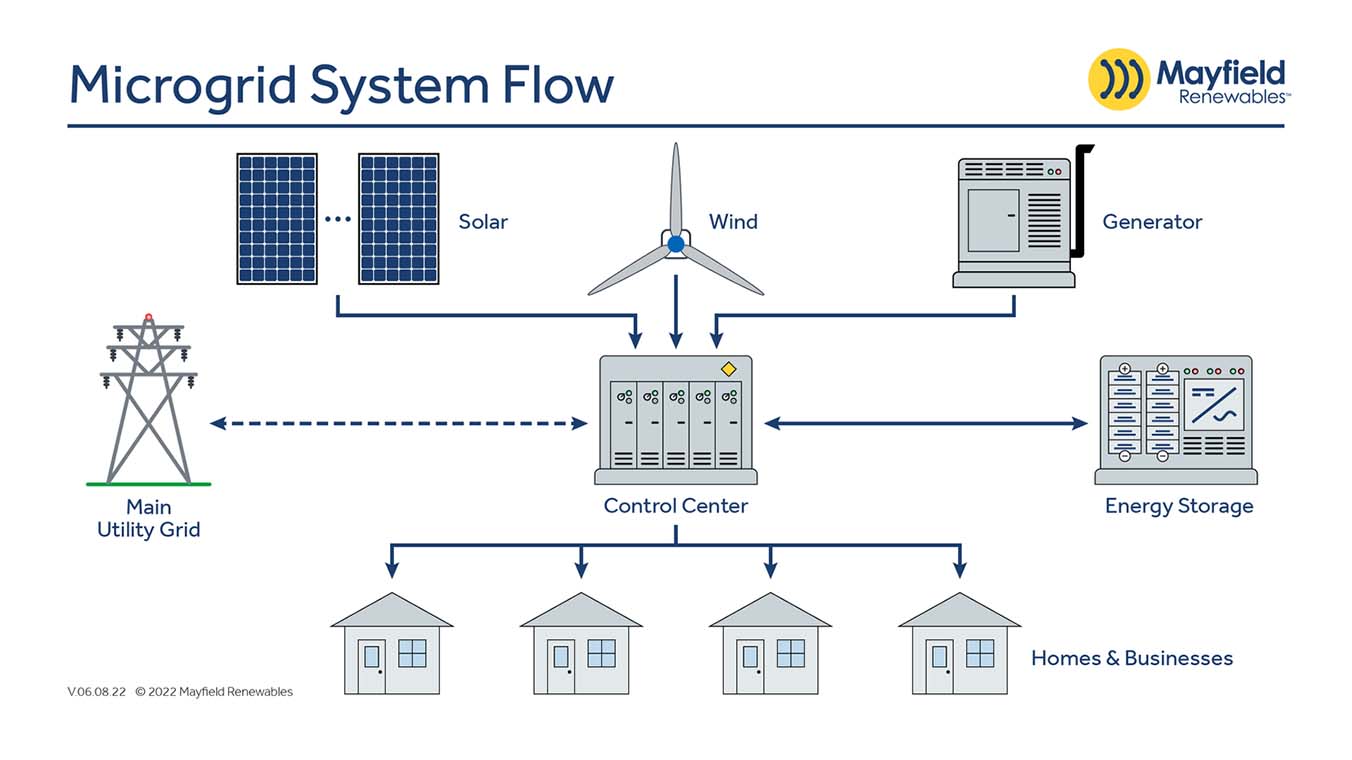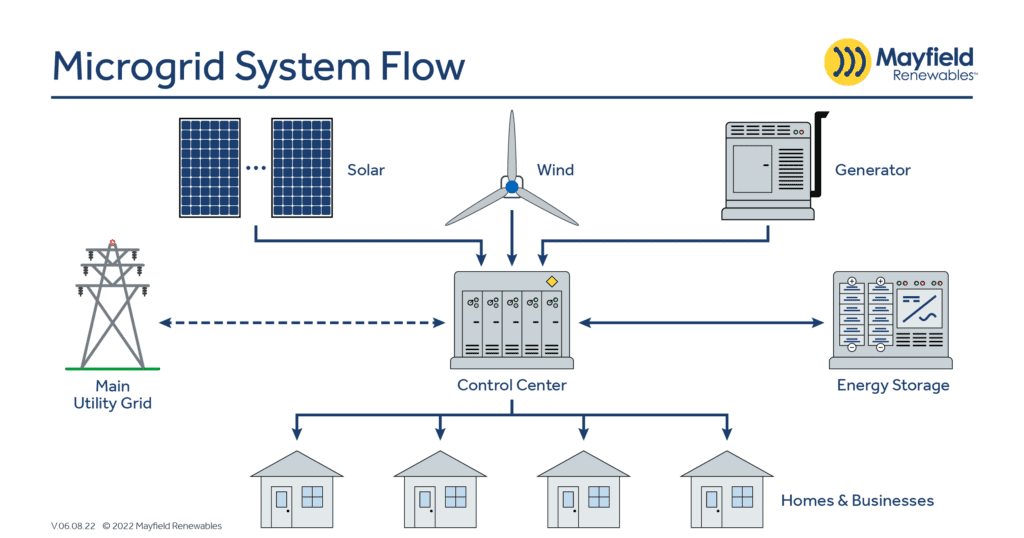
Technical Article
Microgrids Explained: Part 1
The majority of the US electric grid was built in the early 20th century. It was initially designed for the one-way transfer of electricity from large, fossil-fuel power plants directly to consumers. The grid of that era delivered power from rural areas, where power was generated, to cities, where much of it was consumed.
Much has changed in the energy landscape, especially over the last 10-15 years, with the accelerated adoption of variable renewable energy sources (VREs) and distributed energy resources (DERs) such as rooftop solar and electric vehicles. These newfound energy flows are much more complex than the existing grid was designed to handle, and redesigning our electric infrastructure will require significant innovation and investment.
As we shift toward rapid, widespread expansion of VREs, the grid is evolving to become more responsive. Integrated, advanced control systems and other digital technologies work with existing equipment to respond more quickly and accurately to electricity supply and demand changes. But the scale of these solutions has not met the scale of the problem—yet.
Alternatively, some of the world’s electrical systems are pivoting to ‘decentralize, decarbonize, and democratize,’ driven by the need to lower electricity costs, improve resiliency and reliability, reduce CO2 emissions, and expand access to electricity. Microgrids, in particular, have emerged as flexible, scalable solutions that can integrate and manage the many distributed VREs required to meet much of the world’s climate goals. Here, I provide an overview of what a microgrid is, how a microgrid is constructed, and some typical applications for a microgrid system.
What is a microgrid?
The term “microgrid” is not well understood. If you ask five people to describe a microgrid, you will likely get five different answers. For our purposes, we will use the Department of Energy’s definition:
A group of interconnected loads and distributed energy resources within clearly defined electrical boundaries that acts as a single controllable entity with respect to the grid. A microgrid can connect and disconnect from the grid to enable it to operate in both grid-connected or island mode.
This definition requires three distinct features from a standard ‘macrogrid’:
- an easily identifiable boundary from the rest of the grid
- resources within the microgrid are controlled together
- the microgrid can function whether or not it is connected to the larger grid
How is a microgrid built?
A microgrid can be broken down into three key components: generation, load (demand), and storage, all within the same controlled network.

The microgrid must have at least one generation source to meet onsite electrical demand. Historically, fast-starting, robust diesel generators have been the dominant power generation sources for most microgrids. But with the falling cost of solar PV and energy storage, many microgrid developers are either skipping the diesel generator entirely or reducing its fuel burn by installing a solar-plus-storage system. An energy storage system (ESS), like a fossil-fuel generator, can respond quickly to changes in demand. Unlike a generator, the ESS does not need to burn costly, dirty fuel while idling around the clock.
Beyond generation and storage components, sophisticated control systems act as the brains of a microgrid. A typical control system includes many distributed controllers and sensors and a central supervisory control and data acquisition (SCADA) system to collect data and distribute instructions. The software behind the controls can balance the load by increasing generation or decreasing demand elsewhere on the microgrid, maximizing renewable energy usage, and minimizing other electricity costs. Microgrids also contain many of the same critical components required for the standard grid, such as transformers, inverters, switchgear, and protective devices, but scaled down to the appropriate size for the system.
What are some microgrid applications?
Microgrid development is a force multiplier for grid reliability, resiliency, security and control. As more microgrids go online, the existing grid gets broken into smaller components that can be added together or isolated on-demand.
The existing grid connects homes, businesses and other buildings to central power sources. This interconnectedness has one major downside – everyone is affected when part of the grid goes down. A microgrid generally operates while connected to the grid, but more importantly, it can also decouple itself and operate on its own using local energy generation in times of crisis like storms, power outages, or even peak-rate periods. This ability to become an energy island is useful for many applications, including:
Emergency backup: Microgrids can become electrically isolated from the rest of the grid in the event of an outage while continuing to produce and use electricity onsite.
Energy independence: A microgrid can connect to a local resource that is too small or unreliable for traditional grid use, allowing communities to be more energy independent and, in some cases, more environmentally friendly.
Extended islanding: A microgrid can be powered by distributed generators, batteries, or renewable generation resources like solar modules. Depending on how it’s fueled and how the connected load controls are managed, a microgrid may be able to run on its own for weeks at a time or even indefinitely. The system can be designed with any specific period of autonomy in mind.
As microgrid deployment becomes more common, understanding what they are, how they are built, and how they can be used will become increasingly important. In the coming weeks, we will share more articles that dive deeper into the nuances of microgrid system modeling and design best practices and specific examples of microgrids in use today.
Our team of solar-plus-storage experts also offers many microgrid development services, including feasibility studies, component selection and sizing, and RFP and full permit set development. To learn more, contact us at design@mayfield.energy or fill out the project form linked here.

